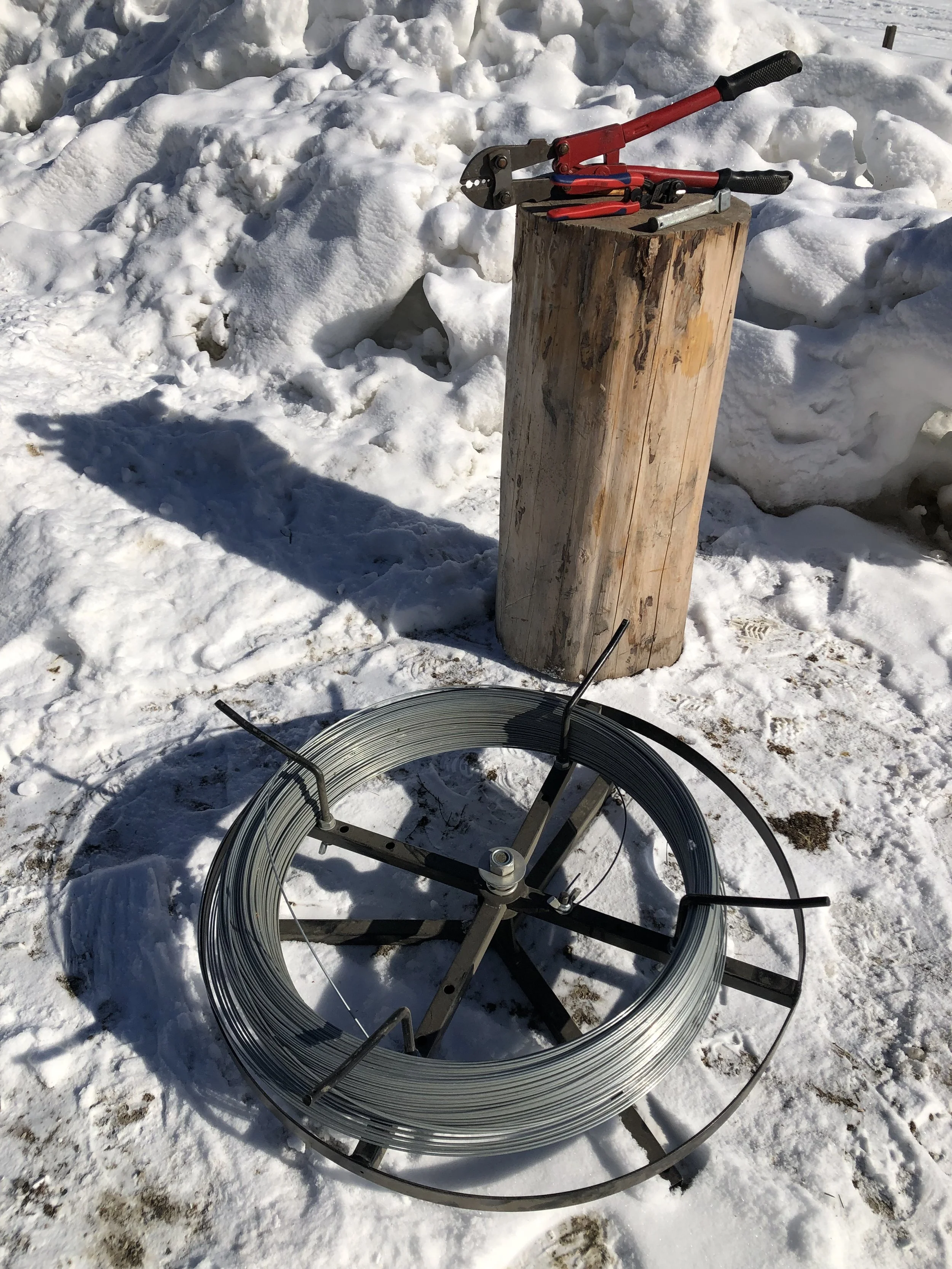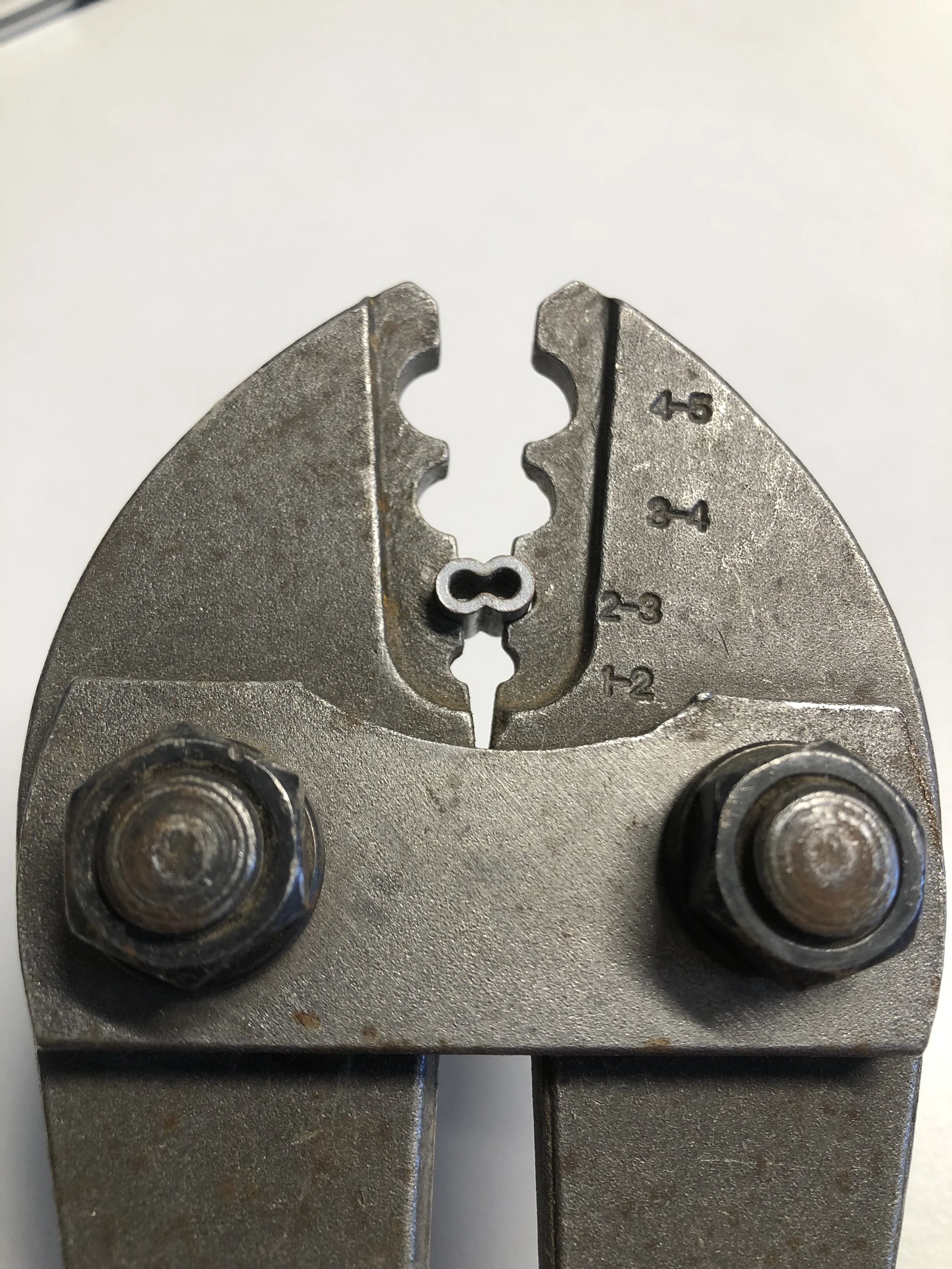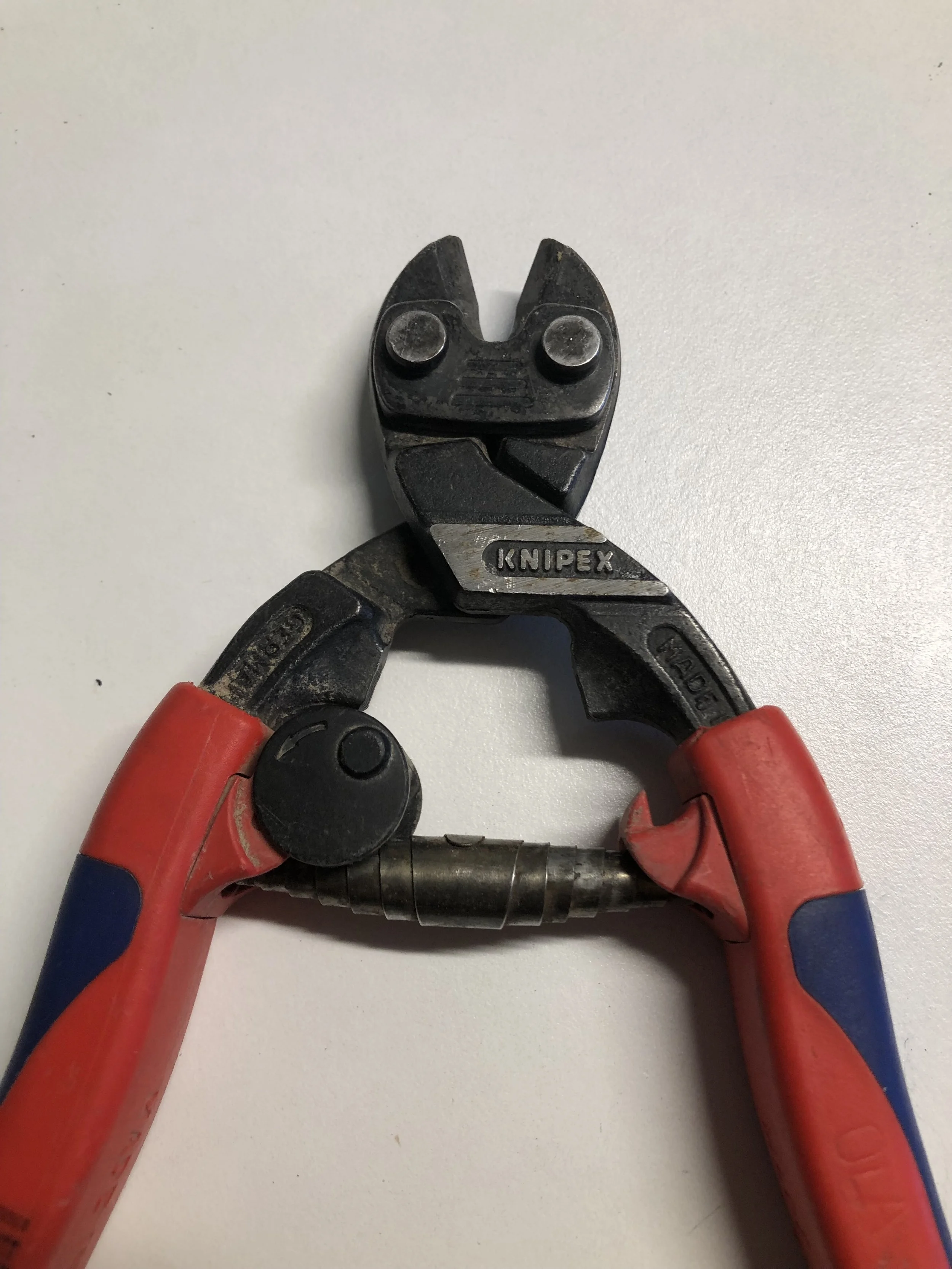Electric Fencing Tools
Being a farm that operates livestock without owning any land, infrastructure development is a serious consideration that is constantly thought about around here. What I have found is that a high tensile electric fence is often times the best solution. Being able to keep livestock to where we want them to be, protecting them from predators, and having a system that is semi permanent to permanent is a job well suited for high tensile electric fences. How to build a fence is certainly an important topic that I’ll cover, but it this posting, I’m going to talk about the specialty tools for building an electric fence. In trying to stretch every dollar we have, often times we try to improvise and make do with what we have on hand. But not having the right tools to do a job can be very frustrating. Luckily for building high tensile fences, the majority of the tools one would need are probably already on the farm. And the cost of adding the specialty tools for putting together a high tensile fence is not a cost that will break the bank.
Spinnng Jenny
Spinning Jenny - An absolute must have. there is no realistic way to build a high tensile electric fence without one. The spinning jenny allows the payout of a roll of wire without the wire becoming a huge mess. The roll of wire is placed onto the spinning jenny usually with the label on roll upright. It is then secured to the spinning jenny, the end at the bottom of the wire is secured on, and then the arms are adjusted to maintain the wire stable. Only when the arms are adjusted properly and end of the wire is secured should the wire ties holding the entire roll be cut but make sure to be holding on to the top end of the wire, it will want to move uncoil the top of the wire. Once the roll of wire is free, the end of the wire on the top can be placed in the ground or hooked somewhere on the spinning jenny to keep the entire roll from unravelling. The two most common types of spinning jennys are ones with a base that sits on the ground or has a spike which goes into the ground. Spiked ones are cheaper, but I personally think the possibility of the spike falling over with the full weight of the coil and lack of portability outweigh the cost savings. Also, spinning jennys that have a “brake”, which is basically spring pressure adjusted by a nut, is a must have to control the free spin when coming to a stop while pulling wire out. Smooth and steady is the name of the game when paying out wire keeping the wire from taking to steep an angle as it comes off the roll keeps entaglements from happening
Four slot crimp tool, note the proper orientation of a crimp to be swagged
4 Slot Crimp Tool - For crimping wire, this is the proper tool to have. Although hand tying fence knots make for showing craftsman ship in building a high tensile fence, a crimped connection is stronger and quicker. The 4 slots are for different crimp sizes. For building electric fences with 12.5 gauge wire, the 2-3 slot will be the most used with the corresponding crimps. The 3-4 slot also is used, but it is for electrical crimps that are not meant to be under tension. Note how the crimp is placed in the crimper jaw. On shorter length crimps only one swage is done with the tool, however multiple crimps need to be used to connect the two high tensile wires. When using a long crimps, only a single one is used to connect the wires, but at least three swages by the tool need to be done to achieve the full holding strength. One last bit, when you purchase one of these tools, make sure to follow the instructions how to set it up with the guide plate that is included.
Knipex high tensile wire cutter
High Tensile wire cutter - If there is any one tool not to skimp on, it would be this tool. Knipex makes a great tool for this job. And while it is expensive, I will regularly put these cutters in the hands of customers and have them compare the amount of force required to cut wire vs a cheap no name brand cutter. It is a night and day difference. There will be no shortage of having to cut wire when building a fence and this tool is worth its weight in gold. I do sense the hesitation that individuals have in purchase this tool, and often times they talk about not needing one because their fencing pliers already has a cutter. There are a two reasons why this is the right tool for the job, first is that the leverage of this tool makes cutting much easier. It takes significantly less effort to cut wire than it does with cheap tool. Second is that the hardness of the metal is much higher than your normal fence pliers (64 HRC vs 35-50 HRC) which is important when cutting thought high tensile steel to keep the cutting edge from getting damaged.
Fence staple driver
Fence Staple Driver - While not an absolute must have for building electric fences, this tool sure does make driving fence staples by hand much easier. For the professional who is building fences day in and day out, pounding fence staples in becomes a skill easily mastered. But for those of us who don’t build fences every day, day in and day out, this tool makes driving staples in so much easier. It should be in every fence building tool box because of how much easier it can make putting staples into wood fence posts.
And there you have it, my four most important electric fence tools. There certainly are more that can be added for various circumstances and situations, but these are at the top of my recommendation list to just about anyone starting out.




